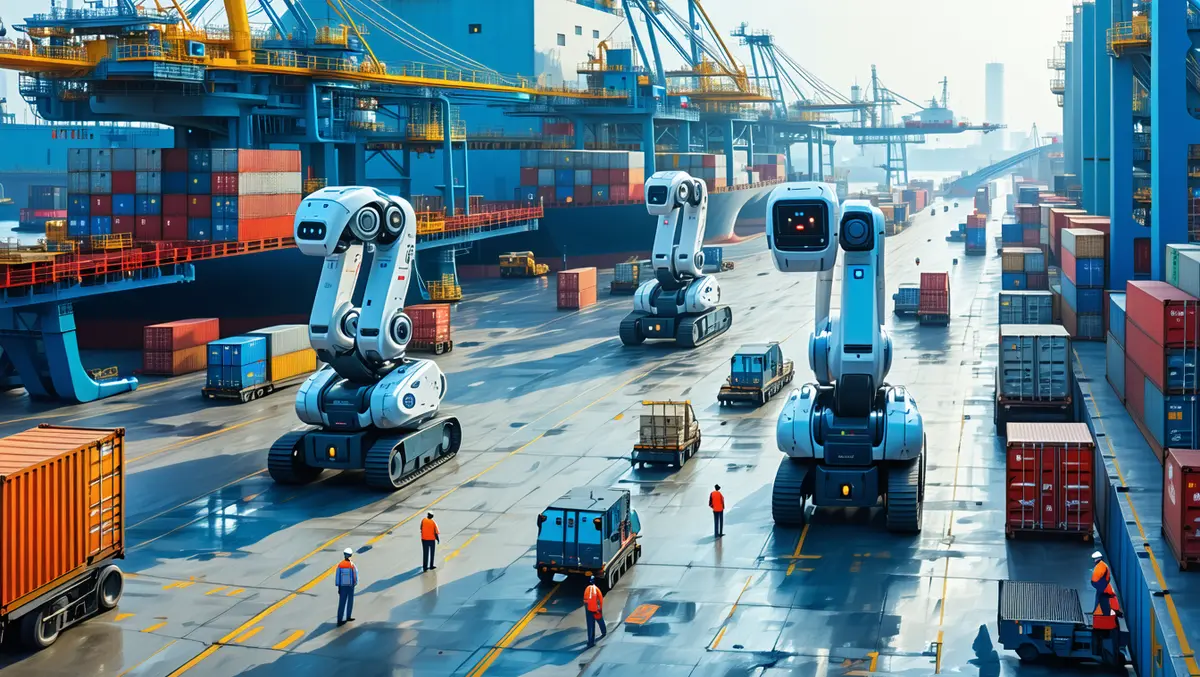Port of Tauranga, New Zealand's largest port, has implemented robotic solutions to boost the longevity of its legacy IT systems and alleviate the workload on its staff.
The deployment of robots, developed by New Zealand-based Quanton, has enabled the Port of Tauranga to extend the life of its existing systems by streamlining certain operations. These robots have been integrated into the port's processes to achieve significant time and cost savings while providing additional capacity to plan for future technological advancements.
Thomas Wansbone, Financial Controller at Port of Tauranga, highlighted the benefits of the automation, noting that it has breathed new life into critical internal IT systems and alleviated the burden of repetitive tasks on staff. "The robots have given additional life to important internal IT systems and freed up staff from mundane tasks," he said.
The first operational robot, Visbot (Vessel Invoicing System bot), manages the import, validation, and generation of documentation related to vessel invoicing. This task involves charging each vessel visiting the port, as well as handling charges per container regarding movement, rail cost, security, and power. Traditionally, the process required reconciling data from the container terminal system with Microsoft Access databases to create supporting documents.
Wansbone explained that the data-heavy nature of the task made it suitable for automation. "There was a lot of data to import, go through and do the reconciliations and while it took time, it didn't require huge amounts of brain power - making it perfect for a robot," he remarked. Following successful tests, Visbot reduced the processing time from an average of one to two hours per vessel to just five to seven minutes.
Wansbone further elaborated on the impact of Visbot, stating, "Visbot meant we didn't have to increase headcount as volume grows and more vessels come in. Having the robot going in the background has kept a lid on the headcount and means that the team can put their minds to better use than just that mundane task."
Additionally, the port has implemented Chasebot, a robot designed for automating debtor reminder notifications. "While it's an area Wansbone says hasn't been a big issue for the Port, there were concerns when Covid hit that debtor numbers - previously very small - could increase," the press release noted. Chasebot manages the process by sending reminder emails and formal letters, or issuing credit stop warnings based on the days a payment is overdue.
Unlike Visbot, Chasebot was developed using C-Sharp programming to minimise licensing costs. Garry Green, Managing Director of Quanton, shared insight into their development approach, stating, "Our technology-agnostic approach means we can come up with the best fit solution for clients. We weren't trying to force one technology over every problem. Instead, it's a case of 'what's the problem' and then finding something that can solve that specific problem in the best possible way."
Wansbone indicated that while the number of bad debts had been minimal, Chasebot serves as a precaution to ensure no debts are overlooked. Furthermore, the port has also introduced a robot to automate the dispatch of invoices.
Looking ahead, the Port of Tauranga is assessing further opportunities for automation, with aspirations to introduce robotic solutions to its container terminal. "Hopefully once we get the first robot over there they will uncover other areas where it would be great to use robots," Wansbone said.
Wansbone made it clear that although the current use of robots is not extensive, the enhancements have been notable. "We are able to extend the useful life of those proprietary systems. Eventually, as we are doing, we will need to update those systems, but instead of having to do it five or 10 years ago, it has given us this extra life which has been fantastic, saved us a lot of money and given us more time to work through things. And it's helped save time for our small team," he concluded.



